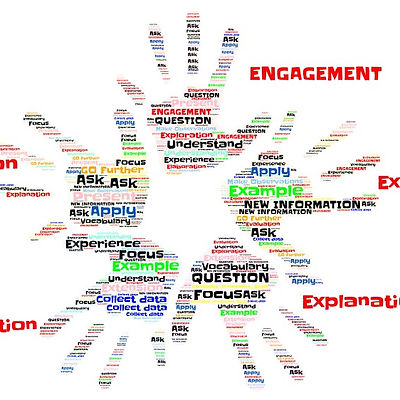
PHILOSOPHY
My Maker Philosophy
My teaching philosophy explains the principles that shape my personal views on what it means to be a successful teacher.
The purpose of teaching is not only to provide knowledge but also understanding.
As a teacher, I cater to all of my students' needs focusing on how individual students learn in order for them to thrive in the classroom setting.
Teaching Growth mindset through the Engineering Design Process.
I want the students in my classroom to know that it is okay to fail. Carol Dweck’s research on growth mindset recommended teaching students that the brain is like a muscle that gets stronger and works better when exercised. I would teach students to stretch their minds and work hard to learn something new. Misconceptions are a good thing because they can lead to mastery. I want my students to change their way of thinking; instead of seeing mistakes as a sign of failure, to instead see mistakes as a platform for growth.
A “Fixed Mindset” is one that states our intelligence and ability are static and unchanging. A “growth mindset” on the other hand, embraces challenges and sees failure not as evidence of unintelligence but as a way for growth.
“In one world, the effort is a bad thing. It, like a failure, means you’re not smart or talented. If you were, you wouldn’t need effort. In the other world, the effort is what makes you smart or talented.” Carol Dweck
Introducing the principle of a growth mindset through the Engineering Design Process encourages my students to keep trying through the challenges. It allows students to learn by failing, discover new possibilities or solutions as well as apply scientific concepts. According to Katehi et al., the proposed benefits of the Engineering Design Process includes improved student achievement in math and science courses, increased awareness regarding the work of engineers, engagement in engineering design, interest in pursuing careers related to engineering, and increased technological literacy (Katehi et al., 2009). The authors further propose that teaching math and science concepts by using the Engineering Design Process can ease the process of students’ understanding of challenging material because engineering allows them to problem solve in a real world context. Students' minds are always developing and learning from experiences and a growth mindset promotes higher achievement.
Open and Inclusive Classroom through Culturally Responsive Education (CRP)
Pedro Noguera a pioneer in Culturally Responsive Pedagogy stated that “We must teach the way students learn, rather than expecting them to learn the way we teach”
When I think of my role as a teacher, I reflect on the relationships that are built in the classroom, between me as a teacher as well as the student-to-student relationships. One of my highlights as a teacher is learning about my students' interests and knowledge is important to them. I want my classroom to feel more like a community for students to build connections with one another as well as learn from other students’ experiences and interests. To teach students in a meaningful way means to engage students in learning that is about their life. Creating this community environment requires me as a teacher to really know about my students and be open to new ways of thinking.
My classroom environment is very collaborative, encouraging students to work together to come to a common goal. A benefit of cooperative learning is that students understand what they are expected to do and they are expected to work together so that the potential for learning is maximized. The results showed that the children in structured groups used more higher-order thinking skills to respond to specific problem-solving questions than their peers in unstructured groups. Students that work together cooperatively actively promote each other’s learning and develop social behaviors that encourage participation in group activities, such as staying on task, sharing ideas, and information while giving good explanations to each other. I believe that the best way to engage students in the classroom is to allow them to work together to solve problems in a collaborative way. I want my students to feel comfortable asking questions and problem solving instead of just generating the “correct answer.”
Creating good relationships with students
My philosophy is based on my experience in the classroom as well as the knowledge garnered from the UTeach program. Entering into my teaching career, I am excited to expand my philosophy, knowledge, and skills and implement new things into my classroom. As a teacher, I know that I am going to be a lifelong learner and I can’t wait for the opportunities that lie ahead.
Katehi, L., Pearson, G., & Feder, M. (Eds.). (2009). Engineering in K–12 education: Understanding the status and improving the prospects. Washington, DC: The National Academies Press.
